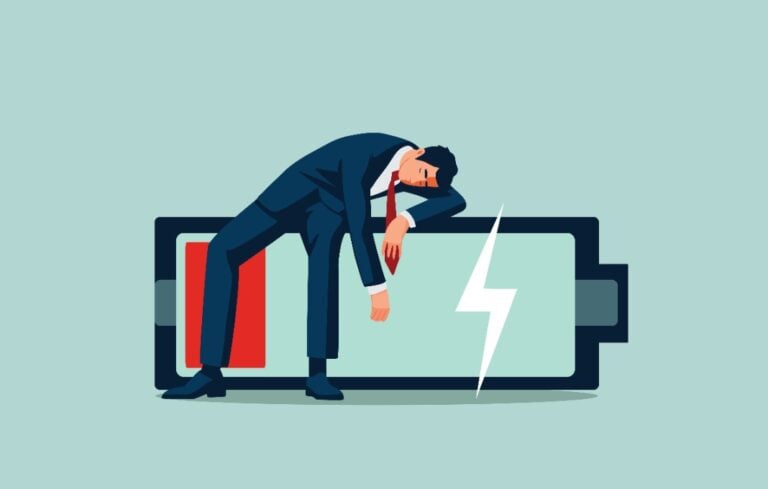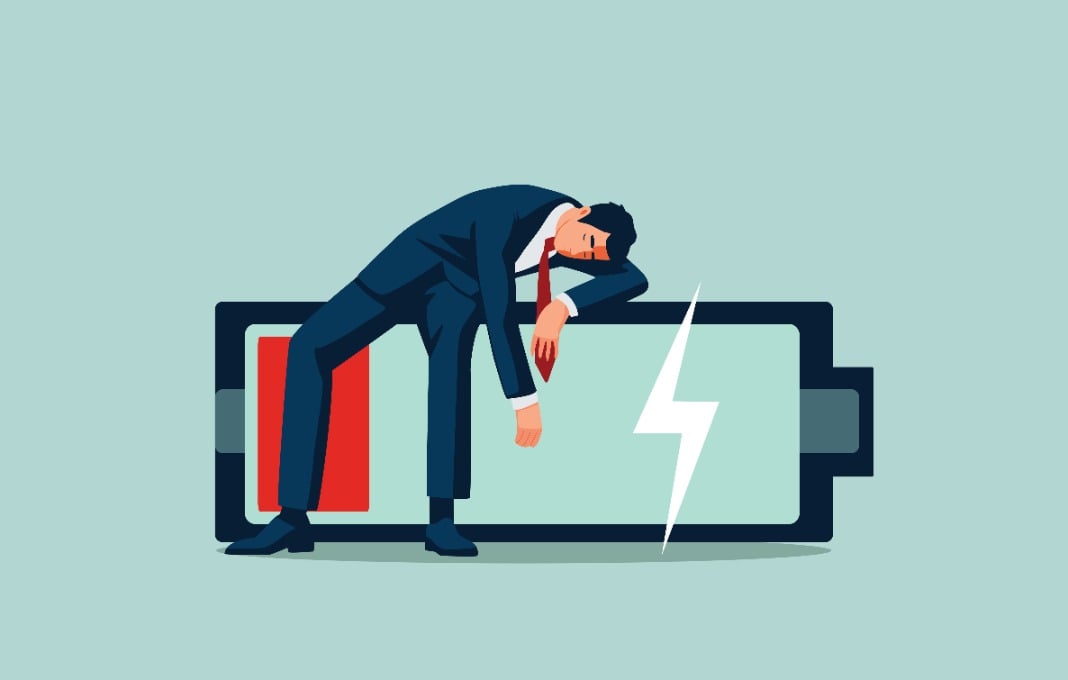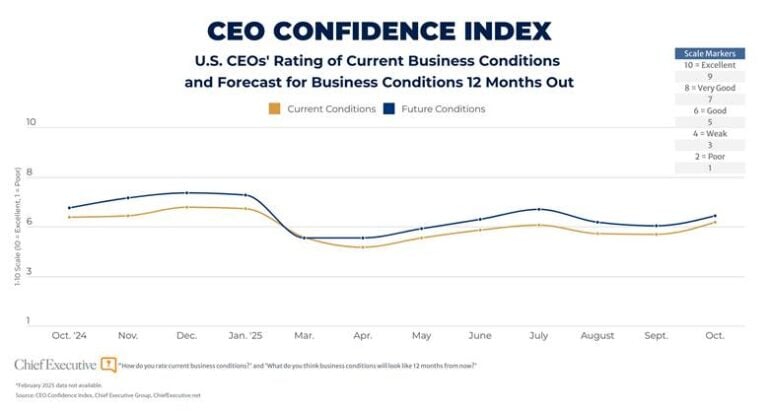
The Energy Audit Is In: Why Executive Burnout Puts Strategy—And The Whole Business—At Risk


We’ve probably all seen it too many times. A once-vibrant CEO, sharp and decisive, starts stalling. Vision becomes vague. Decisions grow reactionary. Innovation flatlines. Everyone else sees the symptoms, but the leader—the very person meant to set the pace—is running on empty and doesn’t even realize it.
Executive burnout rarely arrives with warning lights. Unlike team-wide morale slumps or turnover spikes, it creeps in quietly and disguises itself as dedication, long hours, and “just pushing through.” But the costs are far from quiet. When an executive’s energy wanes, strategic focus follows. Performance suffers—not just individually, but organizationally.
And yet, despite the massive impact, the energy levels of top leaders are almost never treated as business-critical. That needs to change.
While companies increasingly invest in employee wellness and flexible work policies, the well-being of those in the C-Suite often remains unspoken. Leaders pride themselves on being stoic, resilient and tireless. But burnout at the top reverberates through every layer of the business. It clouds long-term thinking, stunts risk-taking and communicates to teams (consciously or not) that running on fumes is just part of leadership.
As the founder of a top executive coaching firm, one that works with high-performing CEOs and elite professionals, I would like to encourage a different mindset: Executive energy is not a private concern to be managed behind closed doors. It’s a strategic asset. And like any asset, it requires investment, monitoring and care.
According to SHRM, 70 percent of C-Suite leaders are considering quitting their jobs for roles that better support their well-being. When leaders are mentally and physically depleted, they default to short-term fixes. Innovation gives way to preservation. Culture becomes compliance. And company momentum slows, not because of market conditions, but because those steering the ship are navigating in a fog.
The reasons are both obvious and hidden in plain sight.
Cognitive overload is constant. Every day demands context switching between high-stakes decisions, team dynamics and external pressures. Add to that the chronic weight of being the final call—and the pressure to always look energized and unshaken—and it’s no wonder executives burn out. Many silently operate under the illusion that if they pause, everything else falls apart.
This myth of invulnerability keeps leaders stuck. Instead of pacing themselves for longevity, they sprint toward an invisible finish line. Recovery isn’t just delayed. It’s dismissed altogether.
What if CEOs managed their energy the way elite athletes manage their training cycles? Our coaching work bridges this very gap, applying the mental and physical performance strategies of top athletes to the world of high-level leadership.
1. Energy Management > Time Management. Traditional productivity tools focus on scheduling tasks. But energy, not time, is the true limiter. Executives need to align their most demanding work with their peak energy hours and protect those windows fiercely. Not every meeting requires them. Not every problem needs immediate involvement. Delegation isn’t just a management skill; it’s a vitality-preserving tactic.
2. Recovery Is Not Optional. For elite performers, recovery is sacred. I’d advise leaders to schedule recovery time with the same discipline as board meetings. That includes sufficient sleep, intentional movement, regular solitude and strategic white space on the calendar. These are performance multipliers.
At Marie Claire’s Power Play summit, leaders like Katie Kime and Hillary Kerr discussed strategies to combat executive burnout. Kime emphasized the importance of protecting personal time by blocking daily “creative” periods in her schedule, while Kerr highlighted the necessity of setting boundaries around after-hours communications. These practices demonstrate actionable steps executives can take to maintain well-being and effectiveness.
3. Mental Conditioning Builds Resilience. Our coaching approach can incorporate breathwork, visualization and mindset coaching to help leaders stay mentally agile. Just like athletes visualize success before stepping onto the field, executives can rehearse high-stakes scenarios, reset after setbacks and cultivate inner calm, even in turbulent times.
To translate theory into action, consider this simple framework to help self-assess and recalibrate:
Leaders who score low in these areas often wonder why business performance feels “off.” The answer isn’t in the market data. It’s in the mirror.
Organizations can’t afford to treat executive well-being as a side conversation or a private matter. Vitality at the top fuels clarity, innovation and cultural tone-setting throughout the company. CEOs must lead by example, both to sustain themselves and to signal to their teams that high performance and personal sustainability can (and must) coexist.
It’s time to make executive energy a boardroom topic. Annual planning sessions should include a check-in on leadership capacity, not just pipeline forecasts and talent metrics. Coaching and recovery strategies should be built into leadership development as performance infrastructure.
A healthy, energized executive isn’t just “nice to have.” They are the competitive advantage. They are the spark. And when they protect their energy, they give everyone else permission to thrive.



0

1:00 - 5:00 pm
Over 70% of Executives Surveyed Agree: Many Strategic Planning Efforts Lack Systematic Approach Tips for Enhancing Your Strategic Planning Process
Executives expressed frustration with their current strategic planning process. Issues include:
Steve Rutan and Denise Harrison have put together an afternoon workshop that will provide the tools you need to address these concerns. They have worked with hundreds of executives to develop a systematic approach that will enable your team to make better decisions during strategic planning. Steve and Denise will walk you through exercises for prioritizing your lists and steps that will reset and reinvigorate your process. This will be a hands-on workshop that will enable you to think about your business as you use the tools that are being presented. If you are ready for a Strategic Planning tune-up, select this workshop in your registration form. The additional fee of $695 will be added to your total.

2:00 - 5:00 pm
Female leaders face the same issues all leaders do, but they often face additional challenges too. In this peer session, we will facilitate a discussion of best practices and how to overcome common barriers to help women leaders be more effective within and outside their organizations.
Limited space available.

10:30 - 5:00 pm
General’s Retreat at Hermitage Golf Course
Sponsored by UBS
General’s Retreat, built in 1986 with architect Gary Roger Baird, has been voted the “Best Golf Course in Nashville” and is a “must play” when visiting the Nashville, Tennessee area. With the beautiful setting along the Cumberland River, golfers of all capabilities will thoroughly enjoy the golf, scenery and hospitality.
The golf outing fee includes transportation to and from the hotel, greens/cart fees, use of practice facilities, and boxed lunch. The bus will leave the hotel at 10:30 am for a noon shotgun start and return to the hotel after the cocktail reception following the completion of the round.